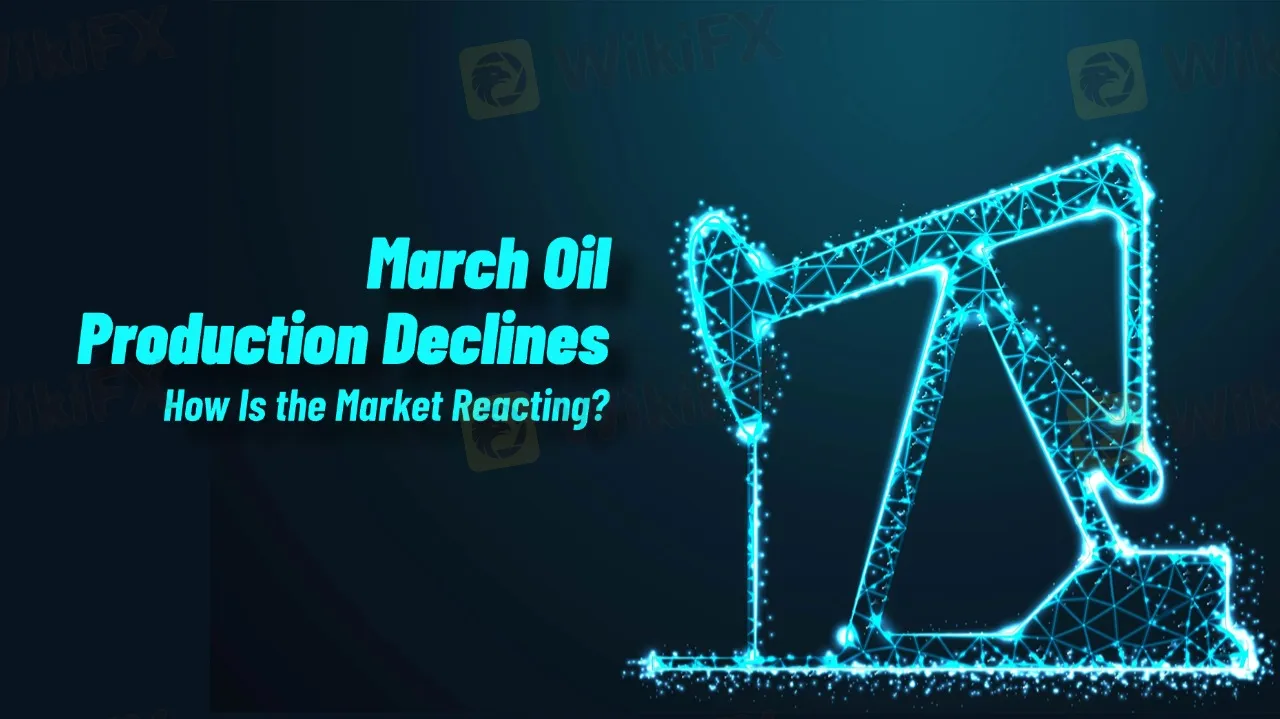March Oil Production Declines: How Is the Market Reacting?
Abstract:Oil production cuts in March are reshaping the market. Traders are closely watching OPEC+ decisions and supply disruptions, which could impact prices and future production strategies.

In March, Nigeria's oil output fell by 50,000 barrels per day (bpd) to an average of 1.5 million bpd, aligning with its OPEC quota. Additionally, a fire at the Niger pipeline has disrupted the loading of Bonny Light crude, causing further delays. Meanwhile, OPEC implemented a broader production cut, reducing total output by 110,000 bpd to 27.43 million bpd, urging member countries to adhere to quotas despite ongoing violations by some nations.
To stabilize prices, OPEC+—led by Saudi Arabia and Russia—plans to gradually restore production capacity that has been offline for years. This move comes as concerns grow over certain members, such as Kazakhstan, exceeding agreed-upon limits. While Iraq cut its output by 40,000 bpd to 4.15 million bpd, it remains slightly above its agreed cap, with limited progress on compensatory cuts. Meanwhile, the UAE increased production by 30,000 bpd, further exceeding its quota.
Impact on Oil Traders
For oil traders, these developments create both risks and opportunities. Supply disruptions in Nigeria could tighten the market, supporting higher crude prices. However, the planned phased production recovery by OPEC+ may counteract this effect by gradually increasing supply. Traders must also navigate geopolitical uncertainties and policy shifts, as OPEC+ attempts to balance market stability with price control.
Market participants are also closely monitoring compliance levels among OPEC+ members. While some countries adhere to agreed limits, others continue to overproduce, affecting price volatility. With Iraq and the UAE's output exceeding quotas, traders must assess how these shifts impact global supply and pricing trends.
However, uncertainties remain. If demand weakens or geopolitical tensions escalate, OPEC+ may need to adjust its strategy. Furthermore, continued non-compliance among members could challenge the group's ability to manage supply effectively. Oil traders will need to stay alert, adapting to shifting production trends and potential price fluctuations in the months ahead.

Read more

Broker Comparsion: FXTM vs AvaTrade
FXTM and AvaTrade are two well-established online brokers offering forex and CFD trading across global markets. Both enjoy strong reputations and high ratings on WikiFX—FXTM holds an AAA overall rating, while AvaTrade scores 9.49/10, indicating they’re regarded as reliable choices by the community. However, since brokers have great reputation in the industry, how do we know which one is more suitable for individuals to invest in? Today's article is about the comparison between FXTM and AvaTrade.

Pi Network: Scam Allegations Spark Heated Debate
A whistleblower report has surfaced, casting doubt on the legitimacy of Pi Network, alleging psychological manipulation, opaque operations, and potential financial exploitation. What is your take on this?

Webull Listed on Nasdaq Following SPAC Merger with SK Growth
Webull and SK Growth complete their business combination, with Webull now trading under the ticker “BULL.” App hits 50 million downloads worldwide.

UN Warns Asian Scam Operations are Spreading Worldwide
UN report reveals Asian scam operations expanding globally, targeting Africa, Latin America with cyberfraud, generating billions amid crackdowns.
WikiFX Broker
Latest News
Love, Investment & Lies: Online Date Turned into a RM103,000 Scam
Broker Took 10% of User's Profits – New Way to Swindle You? Beware!
Pi Network: Scam Allegations Spark Heated Debate
Broker Comparsion: FXTM vs AvaTrade
Account Deleted, Funds Gone: A New Broker Tactic to Beware Of?
Broker’s Promise Turns to Loss – Funds Disappear, No Compensation!
StoneX Subsidiary, Gain Global Markets Bermuda, Penalized for Trading Misconduct
El Salvador and U.S. Launch Cross-Border Crypto Regulatory Sandbox
The Instagram Promise That Stole RM33,000
Coinbase Launches Bitcoin Yield Fund for Institutional Investors
Rate Calc
